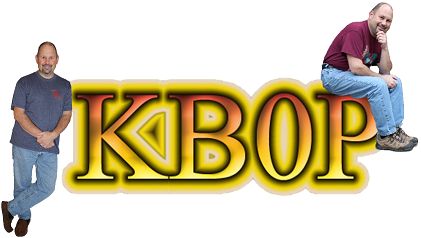Amateur Radio is familiar to change; starting with spark communication, then CW, to RTTY, and now computer digital modes. Voice communication moved through several stages of transformation as well; AM, to SSB, then FM, and now digital-voice communication modes. Today, there are so many digital-voice mode options, it can be confusing to know which one to choose. Allow me to address the differences between the multiple digital-voice modes <this is not an exhaustive explanation- just a brief overview>.

All the digital-voice modes have this in common, that the human voice (analog sound) enters the radio via the microphone, is broken up and converted into a digital signal of on-and-off pulses (1’s and 0’s), and is transmitted over-the-air as computer data. On the other end, the 1’s and 0’s are decoded by the receiver, converted back to analog sound, and is emitted as human voice out of the speaker. The basic difference between FM analog-voice communication and FM digital-voice communication is how the signal is transmitted and received over-the-air.
Digital signals can be manipulated (sequenced, scrambled, split up, etc.) by the processors in the digital radios resulting in many modes of digital-voice, such as DMR, Yaesu System Fusion, Icon D-Star, P25, to name a few. The frustrating point about this is that none of these modes are compatible with each other, requiring the amateur radio operator to purchase a different radio for each individual digital mode (generally). So, many hams give up at this point and may not even enter the new digital playground. I will review a few of the most popular digital-voice modes and explain the difference and advantage of each one.
As far as voice quality, my experience is that all three modes sound very similar to each other (perhaps Fusion is slightly better than D-Star and DMR, but very difficult to tell).
D-STAR (Icom and Kenwood)

D-STAR– Developed by the Japan Amateur Radio League (JARL); in the beginning was Icom equipment only, but since has opened up to additional manufacturers, such as Kenwood.
- Open standard for amateur radio, based on AMBE codec.
- Radios- Icom and Kenwood radios required.
- 1 channel of communication per repeater.
- FDMA (Frequency Division Multiple Access).
- 4.8 Kbps transmission rate.
- 6.25 KHz bandwidth (audio channel width).
- Use DTMF (key press) to call up reflectors (conference groups).
- Registration- required.
System FUSION (Yaesu)

FUSION– properly referred to as System FUSION- but often abbreviated to just FUSION- this system was developed by Yaesu for amateur radio.
- Radios- solely a Yaesu system; must purchase a Yaesu radio.
- 1 channel of communication.
- FDMA (Frequency Division Multiple Access)
- 9.6 Kbps transmission rate.
- 12.5 KHz bandwidth (audio channel width).
- Use DTMF (key press) to call up Wires-X rooms (conference groups).
- Registration- optional
DMR (Motorola)

DMR– developed by ETSI and used by Motorola for the business world. As a result, the system is setup much differently than the Amateur Radio digital modes. My experience is that the learning curve is steeper than D-Star and Fusion.
- Radios- many amateur manufacturers at lower cost to get started
- 2 channels of communication (2 time slots, TS1 and TS2).
- TDMA (Time Division Multiple Access).
- 9.6 Kbps transmission rate (divided by two, 4.8 Kbps per TS).
- 12.5 KHz bandwidth utilization (audio channel width).
- Use DTMF (key press) or Channel method to call up Talk Groups (conference groups).
- Registration- required.
What is my favorite and why?
I like DMR over Fusion and D-Star. The audio quality sounds similar to me, and the amateur radio manufacturers of the DMR equipment have lessened that “business feel” of the DMR system by providing additional features like promiscuous mode and direct key entry to monitor and change Talk Groups. This is why I favor DMR:
- Valuable knowledge- after learning DMR, I can apply my knowledge to my resume if I every have an opportunity to work in the business radio communication field.
Ease of Operation– the Talk Groups are programmed as channels in the radio, and I find it easier to change channels than to type in DTMF codes to change groups; especially while driving.
2 Channels for 1– the DMR repeater has two Times Slots, which means two channels at the same time. This is like getting two repeaters for the price of one. One TS can be used for local communications, while the other TS can be used for distance contacts (a for instance).
Cheaper– since DMR is an open concept, the radios are made by several manufacturers, which means competitive pricing. You can buy a DMR radio for between $50-100 (and maybe less during sales).
Error Correction built in— Unlike D-Star, DMR has error correction. The signal could drop about 15% of it’s data and still sound like voice; if more than 15% then the signal is gone. D-Star just get’s garbled and intelligible.
Please join us on DMR. I hang out on TG 31268 (the U.P. of Michigan Talk Group).
73 de KB0p

